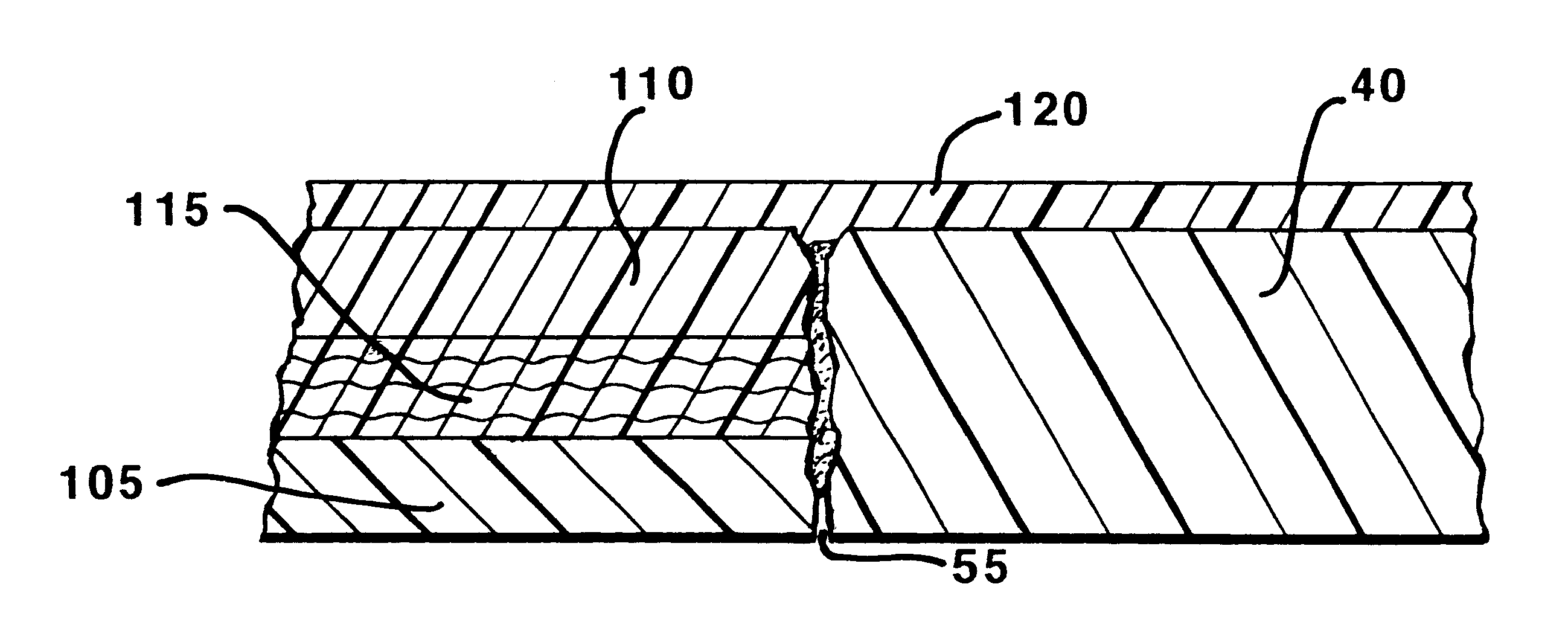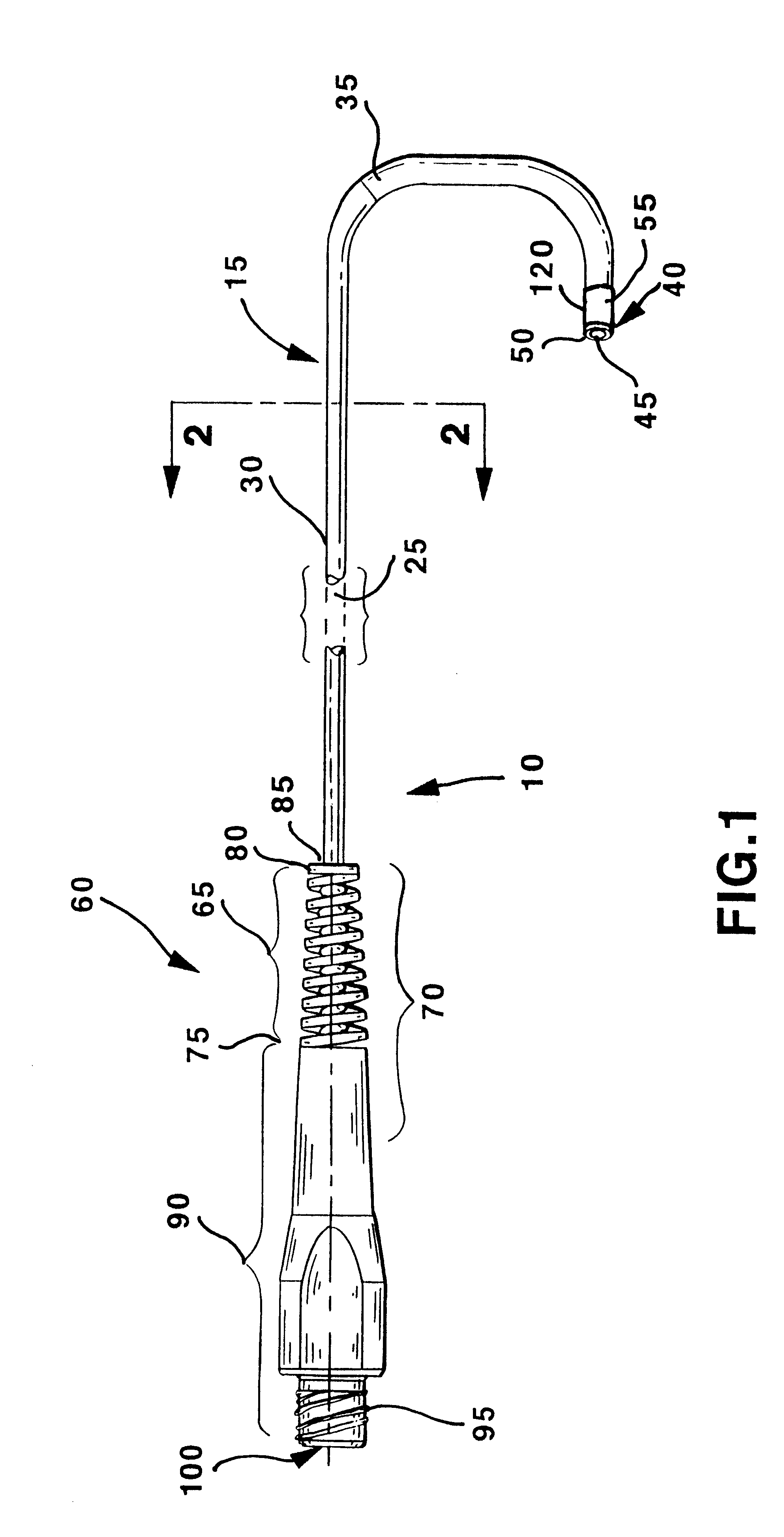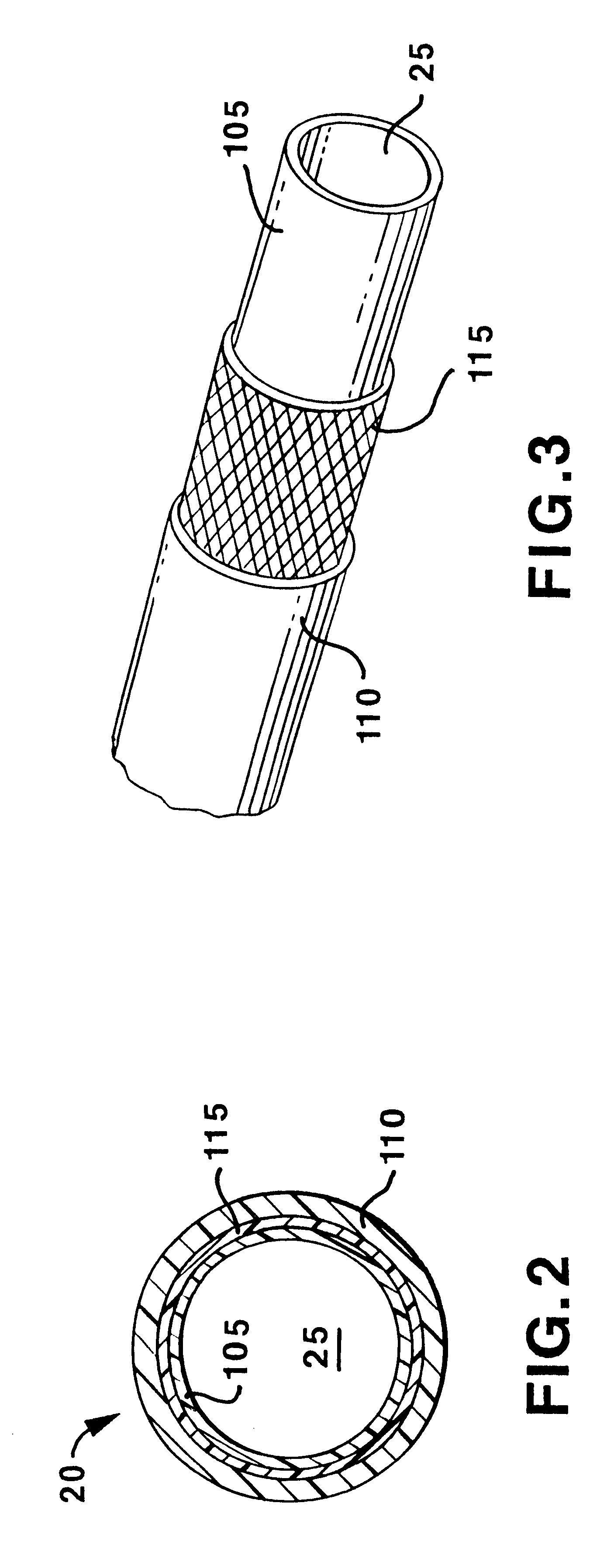Soft tip guiding catheter and method of fabrication
a technology of soft tip and catheter shaft, which is applied in the direction of catheters, applications, diagnostics, etc., can solve the problems of affecting the concentricity, stiffness, and kink resistance of the catheter shaft, and causing the danger of puncturing or otherwise damaging the vessel
- Summary
- Abstract
- Description
- Claims
- Application Information
AI Technical Summary
Problems solved by technology
Method used
Image
Examples
Embodiment Construction
The present invention provides an improved construction for catheters of the type having an elongated catheter body and catheter hub at the catheter body proximal end with at least one catheter lumen extending through the catheter hub and body and to a catheter body distal end thereof. The catheter body is formed of a catheter shaft having a catheter shaft proximal end coupled to the catheter hub and of a relatively short and tubular distal soft tip coupled to the catheter shaft distal end. Such constructions are particularly useful for forming medical vascular catheters in a wide range catheter body lengths and outer diameters. Such catheters include small diameter vascular catheters, having catheter body outside diameters of 4 mm (12 F) preferably below 2.67 mm (8 F), and frequently as small as 1 mm (3 F), and below, such as those used in neurological diagnostic and interventional procedures. Such small diameter vascular catheters will also be useful for other procedures, such as ...
PUM
| Property | Measurement | Unit |
|---|---|---|
| wall thickness | aaaaa | aaaaa |
| thickness | aaaaa | aaaaa |
| ultimate tensile strength | aaaaa | aaaaa |
Abstract
Description
Claims
Application Information
 Login to View More
Login to View More - R&D
- Intellectual Property
- Life Sciences
- Materials
- Tech Scout
- Unparalleled Data Quality
- Higher Quality Content
- 60% Fewer Hallucinations
Browse by: Latest US Patents, China's latest patents, Technical Efficacy Thesaurus, Application Domain, Technology Topic, Popular Technical Reports.
© 2025 PatSnap. All rights reserved.Legal|Privacy policy|Modern Slavery Act Transparency Statement|Sitemap|About US| Contact US: help@patsnap.com



